Setsubun: Goodbye Winter, Hello Spring
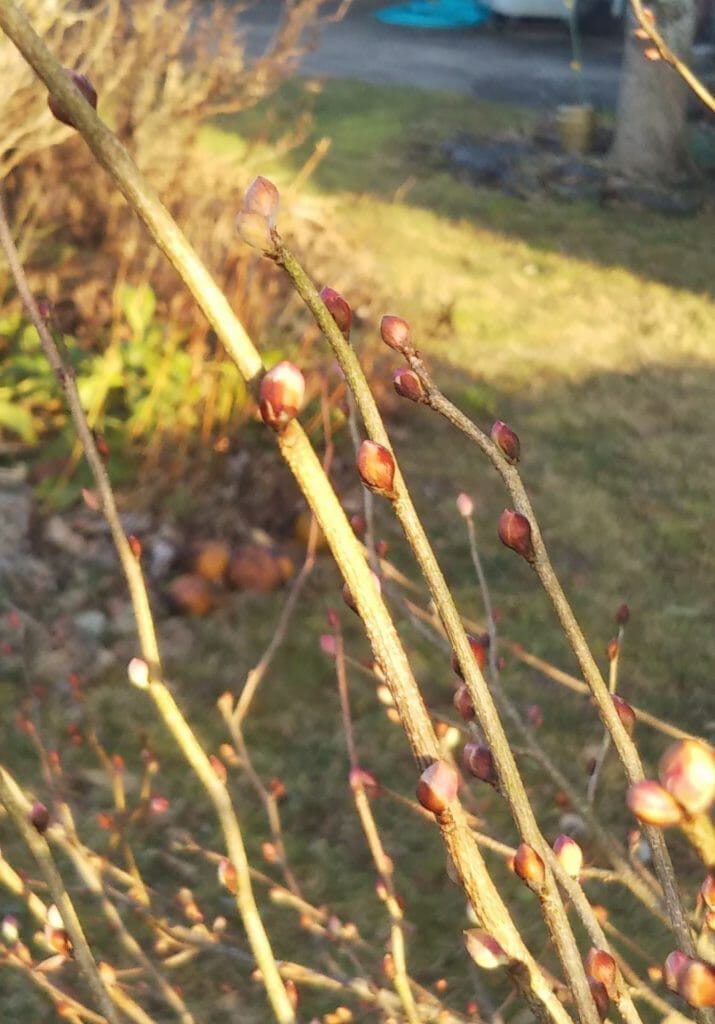
Japanese culture celebrates the seasons. Even for the New Year celebration, the term “new spring” is used to indicate rebirth as the calendar year moves forward. Of course the new year also starts the coldest part of the year, which peaks at the end of January and the beginning of February. The ‘official’ start of spring in Japan is at the beginning of February, February 3 this year, and the day before that is called Setsubun. Setsubun can refer to the day before the beginning of any of the seasons, but since the Edo Period, it generally refers to the day before the first day of spring.
You might wonder why spring officially comes so early in Japan, but all of the official seasonal holidays come about one month earlier than their traditional dates as the result of an offset that occurred in the Meji Period when Japan switched from the previous lunar calendar to the modern solar calendar. Basically they kept the dates the same, ignoring the fact that they were out of alignment with the actual seasons.
Japanese culture has a strong spiritual side, where a spirit world exists in parallel with the human one. The new year was thought to bring the spirit world closer, and so there are several associated customs with many regional variations. The most common one still in practice today is mamemaki, where roasted soy beans are thrown around the house or at someone playing the role of a demon (Oni) mask while shouting “Good fortune in, Oni out!” (But don’t worry about the poor Oni: There is at least one temple that protects the Oni and shouts “Good fortune in, Oni in!”) Also, these day many temples have mamemaki events for people to attend, which let’s you enjoy mingling with other people and gets you out of cleaning up all those beans. (This article shows photos from the Makekirai Shrine’s event: https://www.city.tambasasayama.lg.jp/tambasasayamashashinshimbun/4465.html.)
But with the more temperature climate in many parts of Japan, starting spring in February is not that far off. I took the following photo in our front garden yesterday. The little buds are butterbur (Fukinoto) and are a delicacy that goes great with the new sake that comes out in the late winter and early spring. It has a subtle bitter task that, with a touch of salt, complements sake well. I previously wrote about the many delicacies of Sasayama, and they continue year around and often go well with the many brews of sake made in Sasayama or by brew masters from Sasayama. (Many of the previous brew masters in the famous Nada sake area in Kobe were from this general area, and sometimes they would make sake with the rice they grew themselves or at least rice that was grown in the area they were from.)

The rest of this article shows all of the buds that come out this time of year. Keep in mind that I took all of these photos in our gardens and so they are only a few examples of the wide variety of natural beauty that surrounds Sasayama.
The next photos shows wintersweet (Robai), which is one of the earliest spring flowers to bloom in this area. These will turn into bright yellow flowers the next time we get a day or two of sunny weather.
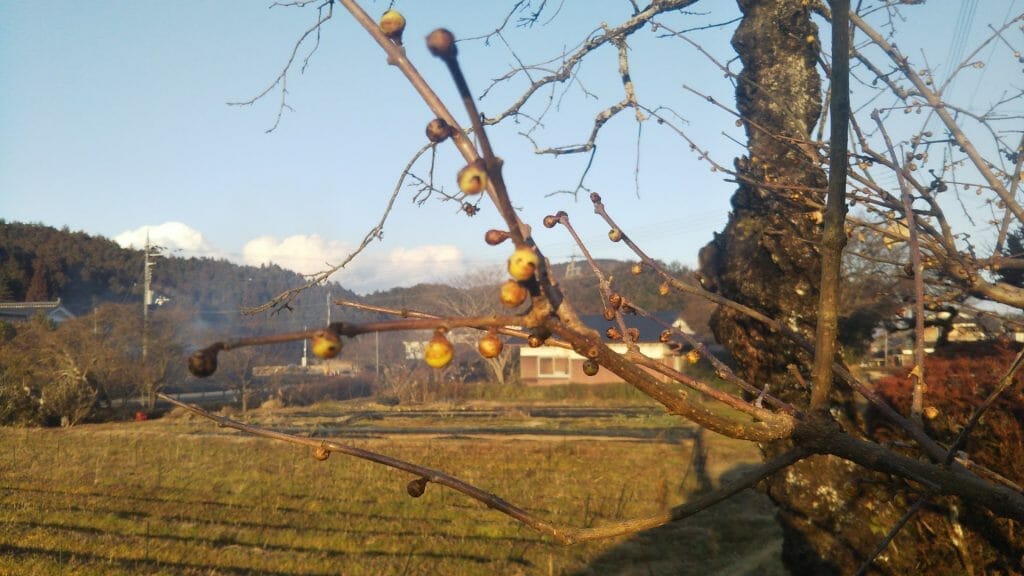
The following buds are of the Japanese hazel-witch (Mansaku), which is also one of the first spring bloomers in Japan. The leaves often remain on the stems even after they have died and dried out, making them perfect for Wabi flower arrangements.

The next buds are from the buttercup winter hazel (Hyugamizuki), one of my favorites. The buds are a delicate pink, but the tiny almost transparent flowers are bright yellow.

Then there is the Ribes sinonsense (Suguri) shown below. The delicate green leaves come out first, followed by bright red berries. This is a relative of the current.
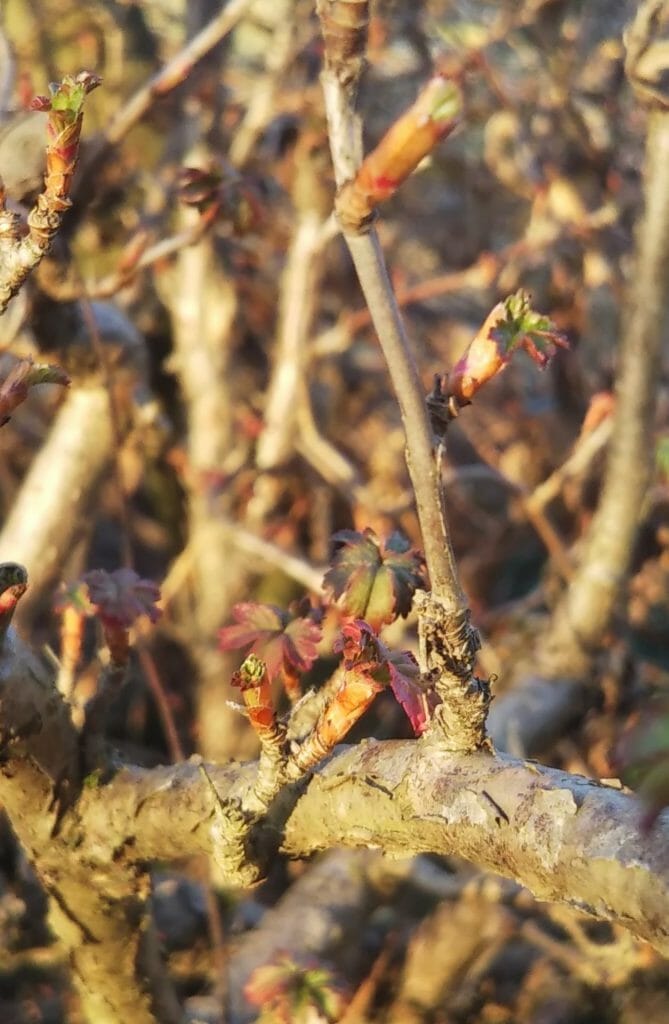
The Japanese andromeda (Asebi) forms a large bush that has a long blooming season, but the new leaves in the early spring come out in shades of auburn, making them a joy to watch as well.
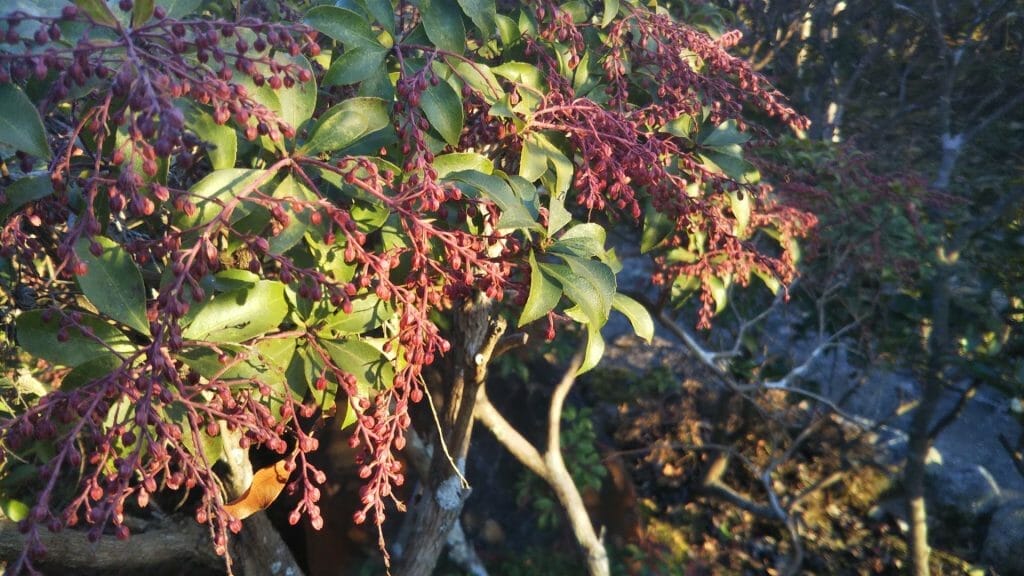
And finally comes the Daphne odora (Jinchoge), which we have in our front garden well away from the tea gardens. The flowers are very fragrant, which means they should not be included in a tea garden as they interfere with the incense and other smells of the tea ceremony.
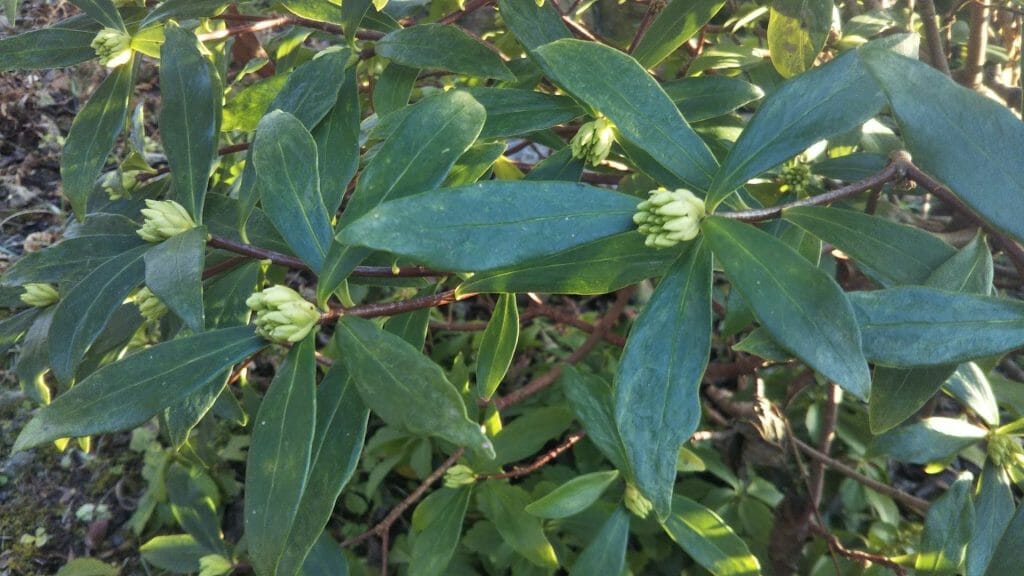
As I mentioned above, these are just a few of the many plants that bud and bloom in the early spring due to the temperate climate of Sasayama. We do get a touch of snow, but it’s still warm enough here for many plant to grow that would not survive harsher climates, adding to the natural beauty of Sasayama.














